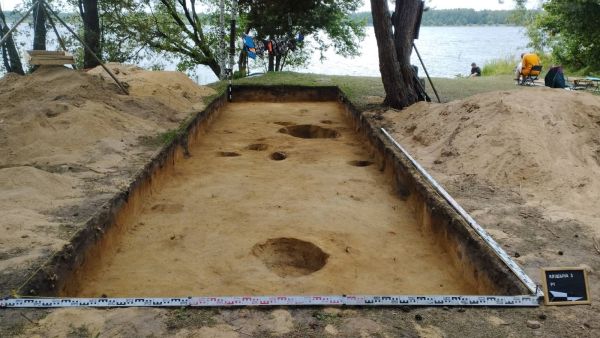

Archaeological expeditions of scientists of the Institute of History of the NAS of Belarus are continuing.
The complex expedition of the Institute of History of the NAS of Belarus under the leadership of the head of the Department of Archeology of the Primitive Society Maxim Chernyavsky takes place on the Kryvinski peat bog. Together with the participants of the diving center Marine Pegasus, the settlement of the late Neolithic – early Bronze Age Kryvina 3 was studied, the cultural layer of which is located below the water level in the artificial tract of the river Kryvinka. Numerous ceramic materials of the second half of the 3rd – beginning of the 2nd millennium BC, fragments of wooden structures have been identified. Materials have been selected for an attempt to construct a relative dendrochronological scale. The methodology of archaeological research at shallow depth has been worked out.
From July 21 to August 10, an expedition of the Institute of History of the NAS of Belarus, led by Alexander Vashanov, a researcher at the Department of Archaeology of the Primitive Society, is taking place in the Krupski district of the Minsk region. The significant site of the early Mesolithic – early Neolithic is being investigated, located near the village of Klishyna in the tract of the river Vyspa. Scientists have found numerous silicon and ceramic products. In one of the excavations, an object was recorded associated with a residential structure and a burial made according to the cremation rite of the early Mesolithic era (9-8 thousand years BC), which is a unique phenomenon for this region. Studies of the settlement of Asaviec 2 (the 3 quarter of the 3 millennium BC, Bieshankovicki district, Viciebsk region) have also been conducted, where the excavation of previous years continues. Numerous archaeological materials have been identified – tools of labor, hunting and everyday life made of bone, horn, silicon and stone, artistic and cult artifacts made of bone and amber. Ceramic tableware is represented in large numbers, among which round-bottomed fillings dominate. Complex ruins of a wooden structure of an unexplained nature have been recorded on part of the excavation.